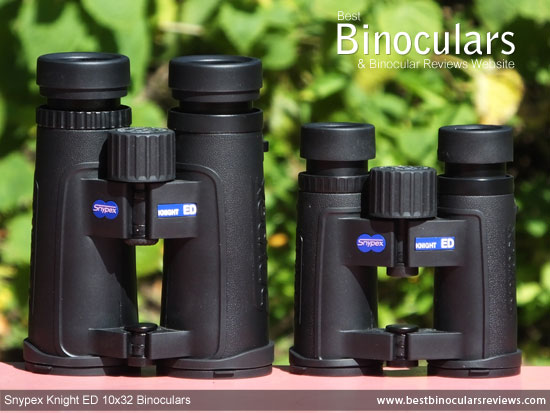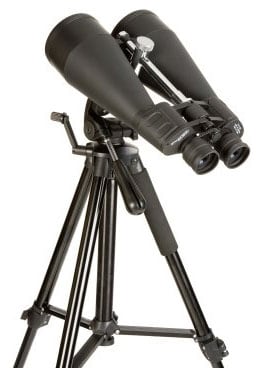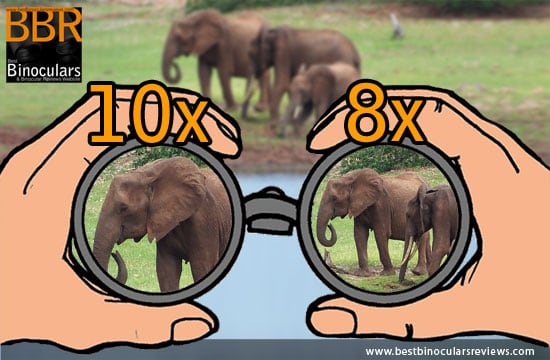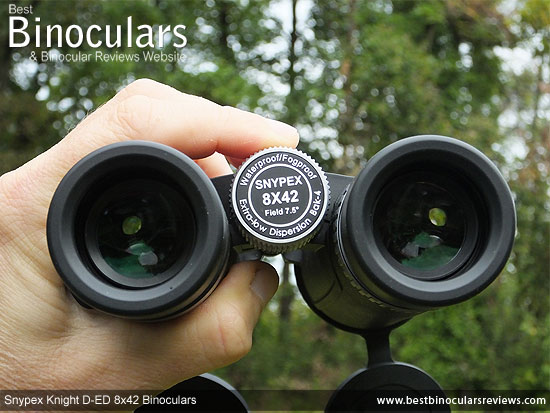Binoculars 101: Magnification, Stability, Field of View & Brightness
How a Binoculars Magnification affects your Viewing Experience
In this article I’m going to discuss magnification and in particular how a binoculars power (magnification) impacts your experience whilst using it.
Please note: For the purpose of this document, I’ll be using the terms power and magnification interchangeably.
Size of the Binocular
When considering a binoculars magnification, it’s important to note that the physical dimensions of the binocular have nothing to do with its magnification. It is a common misconception to assume that a giant binocular has to be the most powerful and that compacts only have low magnifications.
Sure it is common for very high powered long range binoculars to be large, but this is because high powered devices need to capture more light in order to deliver reasonably bright image (see my complete guide to the exit pupil for more on this) and so need larger objective lenses and has nothing to do with the magnifying of the image that takes place in the ocular lenses in the eyepieces.
So you can get pocket sized 10x22mm compacts, mid-sized 10x32mm binoculars, “normal” sized 10x42mm binoculars and then large 10x50mm instruments – all of which have a 10x power and it is largely down to the different sized objective lenses that affect their physical size.

Size comparison between the 10x powered 32mm and 42mm Snypex Knight ED Binoculars
Above is an example of two Snypex binoculars of different sizes but both have the same 10x magnification.
What is My Binoculars Magnification
A binocular will almost always have the magnification (the number that precedes an x) displayed somewhere on the binocular. This is often but not always indicated on the rear face of the focus wheel
This example above is of an 8x42 binocular with that first number referring to the binoculars magnification this means that when you use it, you’re seeing the object 8 times closer than you would with the unaided eye.
The second number, 42 refers to the size of the objective lens.
What the Magnification Does
By increasing the magnification, you get more image detail. Or to put it another way, high powered binoculars potentially offer you a more detailed view of your subject than lower powered ones.
However there are a number of trade-offs associated with this increase in power:
Field of View
The photo below of a small herd of elephants coming down to the waters edge for a drink that I took whilst on safari in Zimbabwe is what you might see with the naked eye or zero magnification.
You can see a nice wide field of view and a lot of things around the elephants like the water, tree stumps and the trees in the background. So if a lion was to come out from there you would instantly see it!
8x vs 10x Power
Now Let’s now look at the image with 8x and 10x power binoculars
Notice how you get more detail, but the more you increase the power, the more the field of view gets narrower and you can no longer see the water or the trees in the background. So if a lion had to come out from there, you would miss it!
So remember that when you increase the power of a pair of binoculars your field of view is going to decrease.
So although you can see the object closer with more detail, a higher power binocular will have a more restrictive field of view which you may want to keep that in mind when you’re looking for binoculars for activities like bird-watching or spectator sports where a wider field of view is really helpful.
Image Stability
Another aspect to consider as you increase magnification is how it impacts image stability as you increase the binoculars power:
Any movement of your upper body or hands is going to be magnified in the view.
So with a lower magnifications like 7x or 8x, if the binocular isn’t perfectly steady you may see some movement or bounciness of the image, but unless you are particularly unsteady this is not going to be an issue.
But what happens if we add more power:
At a higher powers that same amount of instability in your hands or body is magnified even more in the image and so produces a more pronounced movement in the view. Too much image shake and it can become hard to clearly see what it is that you are trying to view.
This is something to consider as you look at binoculars with higher magnifications: you’re going to need to hold them steady and you will probably need to consider some sort of image stabilization like the Canon Image Stabilized binoculars or tripod mounting a standard instrument when you start heading towards powers of 15x and over.
The unsteady nature of the platform is why marine binoculars tend to come in fairly low 7x magnifications and a good general rule of thumb is that lower power binoculars are more user-friendly for people like bird watchers and sports spectators who like a wide field-of-view as it helps them to more quickly locate the bird or on field action and then follow it.
Whereas observers of larger and usually more slowly moving wildlife and hunters prefer to get closer to their game and thus will often use 10 power binoculars or even more.
Obviously for long range observation even higher powered binoculars will be preferable – Guide to Long Distance High Powered Binoculars.
Image Brightness
Increasing the magnification can also be a major factor in you observing a less bright image:
 If you keep the same objective lens size (say 42mm for example), but you increase magnification, the image may seem to become less bright to you and this is more obvious in poor light like at dawn and dusk or when birding in a deep forest. This is down to how the size of objective lens and magnification control the size of the exit pupil and thus how much light is sent to your eyes.
If you keep the same objective lens size (say 42mm for example), but you increase magnification, the image may seem to become less bright to you and this is more obvious in poor light like at dawn and dusk or when birding in a deep forest. This is down to how the size of objective lens and magnification control the size of the exit pupil and thus how much light is sent to your eyes.
Thus, a 10x42 binocular, with more “power” than an 8x42, will be less bright under low light conditions and this is why very high powered binoculars and especially binoculars for astronomy where the light is very poor tend to have large objective lenses: Firstly to collect more light and then ensure that the exit pupil is of a reasonably good size.
I hope this guide to magnification on binoculars helped you understand a little bit more about how it affects the view and helps in you in your quest of choosing binoculars that work best for you.

 Article | Posted by Best Binocular Reviews
Article | Posted by Best Binocular Reviews 



 Categories:
Categories:  Tags:
Tags: 

Helpful